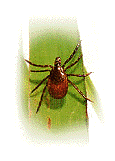The Role of Deer

Deer in Connecticut
Efforts to protect and restore habitat and natural resources, including the reforestation of Connecticut, have contributed to a diversified and health wildlife population throughout the state. The re-emergence of wildlife throughout the state prevents a number of challenges and opportunities. To address these challenges, the DEEP has developed a number of programs to manage wildlife populations, whether it be through habitat restoration projects or regulated hunting seasons. Complementing management efforts, the DEEP is engaged in a comprehensive outreach and education effort to make the public more aware of the wildlife that can be found throughout the state.
- Deer Nuisance Problems
- DEEP Wildlife Division Home Page
- White-tailed deer fact sheet
- Wildlife PDF Library
- 2011 Connecticut Deer Program Summary (PDF)
- Managing Urban Deer in Connecticut (PDF)
- Common Wildlife Problems
- Hunting and Trapping
Deer Control for the Prevention of Lyme disease
Deer have an important role in the life cycle of the ticks that transmit Lyme disease. Adult deer ticks need a blood meal before laying eggs and most frequently this is obtained by feeding on deer. Therefore, while deer do not serve as a source of infection, deer control can play a role in prevention of Lyme disease when used as part of an integrated pest management program to reduce tick populations.

- Engorged female lays eggs.
- Larvae hatch and feed on small mammals when they can become infected with Borrelia burgdorferi.
- Larvae molt into nymphs.
- Nymphs overwinter.
- Nymphos attach and feed on small mammals, birds, pets, and humans when most infections occur.
- Adults attaché and feed on larger mammals (mainly deer).
- Adults remain active on warm winter days and peak of activity in spring.
- Engorged females lay eggs and adults die.
Residents of municipalities that would like to adopt community-wide deer control programs should consider the measures involved with execution and the likely effectiveness of such a program. Once a local decision is made and a plan has been formalized, the plan must be submitted to the DEEP for approval prior to implementation.
For additional information specific to deer control and Lyme disease prevention, please review the following:
- Management of Host Animals (Tick Management Handbook, Connecticut Agricultural Experiment Station, page 52) (PDF)
- An Evaluation of Deer Management Options (Northeast Deer Technical Committee) (PDF)
- Legislation to Improve DEEP's Ability to Manage Wildlife (Connecticut Wildlife, July/August 2003, page 8) (PDF)
Other sources of information
Disclaimer
The State of Connecticut Department of Public Health is not responsible for the contents of any off-site pages referenced through links. The responsibility for content rests with the organizations that are providing the information. Specific details regarding a document should be directed to the appropriate organization and not necessarily to the State of Connecticut Department of Public Health.
To contact the Epidemiology and Emerging Infections Program, please call 860-509-7994.

